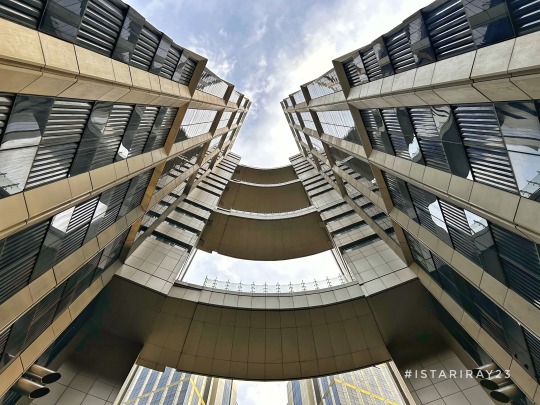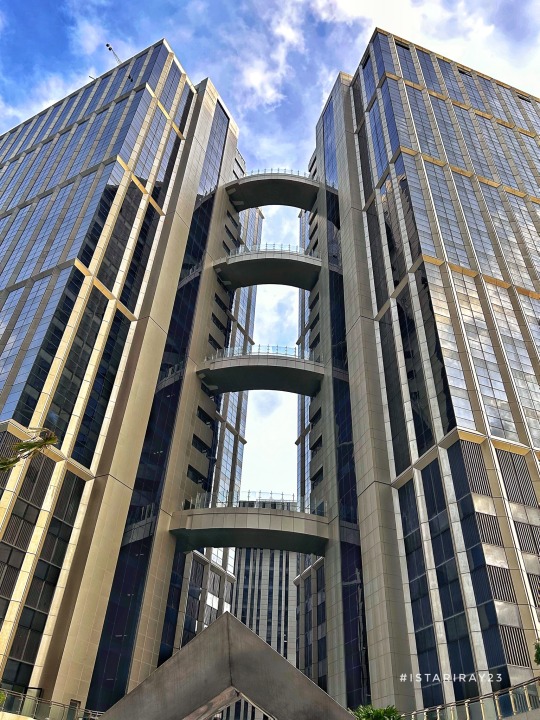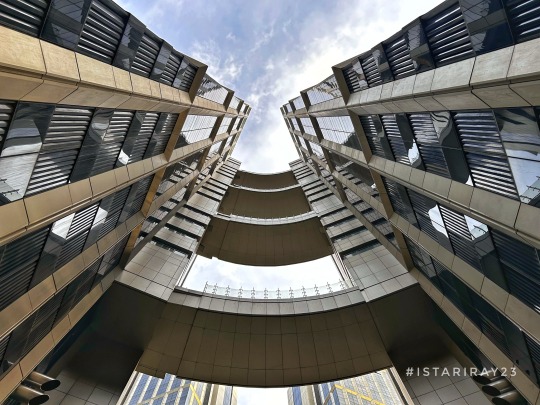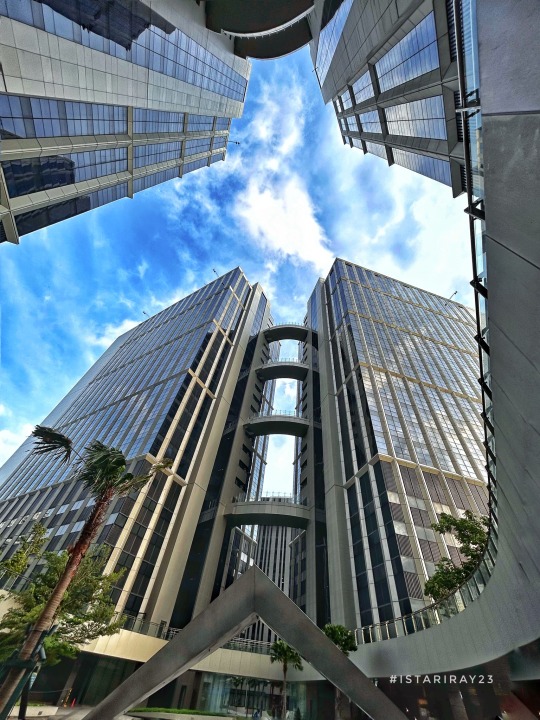#Philippines call center services
Text
4 Strategies To Maximize Your Lead Conversion | HugeCount
Lead conversion is the ratio of your leads that end up converting to paying customers. A high lead conversion rate indicates that you’re targeting the right market and that your products and services cater well to your niche. A high lead conversion rate also saves you the cost of marketing and advertising to leads that […]
Source: https://hugecount.com/business/4-strategies-to-maximize-your-lead-conversion/
#hire call center services#outsource call center services#Philippines call center services#real estate virtual assistant services#Business
0 notes
Text
Streamlining Operations: The Benefits of Outsourcing Technical Support Services
Maximize efficiency and minimize downtime with our Outsourcing Technical Support Service. Our expert team ensures swift resolution of technical issues, offering round-the-clock support to keep your operations running smoothly. Focus on your core business while we handle your technical support needs seamlessly.
#Outsource Call Centers in India#Call Centers Outsourcing in India#Outsource Call Centers#Call Center Services#call center india outsourcing#call center services india#Customer Support Services#Customer Care Solutions#Customer Care Services#Order Taking Service#Outsource Order Taking Services#Order Taking Call Center#technical support service in india#Outsourcing Technical Support Service#Call Centers in USA#Call Centers in Canada#Call Centers in Philippines#Call Centers Services for Dubai#direct response call center#direct response agency
0 notes
Text

Customer Support Champions: The Leading Call Centers in Philippines
Meet the customer support champions of the Philippines – the top call centers that excel in delivering outstanding service. Learn about their expertise, commitment, and the innovative solutions that make them leaders in the world of customer support and business process outsourcing.
0 notes
Text

If you ask me,
You definitely deserve whatever it is that you want to purchase for yourself during payday. It is a reward you give yourself after enduring long work hours and meeting targets and deadlines at work. Doing this also motivates you for the grueling work days ahead until the next payday. Here is a list of things that you can get yourself each payday that will help alleviate the stress that accumulates during the work week.
Shirt / Dress
Food!
Nothing
Shoes / Footwear
Hobbies
--
Read the full blog at orbit-teleservices.com
Written by: Romeo V. Perez Jr.

Orbit Teleservices is an advanced Business Process Outsourcing Company providing high-quality yet cost-effective customer management and business process solutions. We are continuously looking for top talents to join our team. We achieve stability in our organization by treating our employees the same way we treat our valued clients, with utmost care.
Follow and learn more about us.
#customer service#work#job#career#blog#article#csr#bpo#all about bpo#call center agent#call center#bpo life#philippines#pinoy#job hiring#apply now#random
1 note
·
View note
Photo

Open Access BPO was included in a list of top customer service companies operating in Makati, Philippines: https://buff.ly/3s7XDi6
Online news magazine Dasher created the list that ranks firms based on:
Track record
Executive leadership
Market share
Innovation
ESG rating
#Open Access BPO#We Speak Your Language#Customer Service#Customer Experience#Customer Support#CX#Customer Satisfaction#CSat#Call Centers in the Philippines#Philippine Call Centers
0 notes
Text
Biggest BPO Companies in the Philippines
The outsourcing industry in the Philippines currently employs 1.3 Million personnel. The industry is poised to reach out to over 3 Million at the current growth rates. Taking a conservative view, we can peg the annual growth at 15%.
There are many players in the Philippines and the list below is a non-exhaustive list of the largest Bpos in the Philippines, with approximate team size in 2016. For outsourcing needs, you can avail services from any of these companies or from Asiatel Outsourcing based on your requirements.

Some Leading BPO Companies in the Philippines
S.No BPO Name Head Count
1 HGS 6000
2 WNS 3000
3 Accenture 20000
4 Convergys 60000
5 Cognizant 4000
6 Concentrix 8000
7 Dell 4000
8 EXL 5000
9 Teleperformance 14000
10 Alorica 2000
Other than the professional outsourcing companies, there are many captive BPOs set up by multinational companies to take care of their outsourcing needs. Some of the important captives operating in the Philippines are mentioned below:Some Leading BPOs in the Philippines
S.No BPO Name Head Count
1 HSBC 10000
2 JP Morgan 10000
3 Citibank 15000
4 Wells Fargo 5000
5 Maersk 5000 ]
6 United Healthcare 10000
The data is collected from secondary sources through market interactions.
AsiaTel is a rising BPO company in the Philippines. We offer cost-effective best BPO Services in the Philippines and Indonesia.
#BPO company in the Philippines#outbound call center#call center service provider#data entry services
1 note
·
View note
Text
Feature of Cloud Contact Software Services
Cloud contact software offers many benefits & advantages for businesses to manage their customer experience across phone, email, text, and social media, offering functionalities that go beyond inbound & outbound calls. As organizations grow in size, they need more and better support to be able to stay competitive and continue to optimize productivity.
Choosing a cloud contact software may get quite tricky, especially with the fast changing technology landscape and peculiar business requirements. Above all this, so many choices available in the market, makes the process of choosing more complex. To start with, the businesses should first look for the basic features that makes a cloud contact software a preferred communication channel. Some of these features are as follows:
Supports Remote Working & Low Cost Set-up
The first feature to look for is that the software being cloud-based should support remote working. What makes this system of communication highly affordable is that the set up cost is low as there is no requirement of expenditure towards heavy duty erection of infrastructure installation, etc. It has been reported that the enterprises save up over 50% when they switch from traditional set up to the cloud based software.
Shifting to Cloud Contact Software Services Can Be Achieved Quickly
Primarily because there is no hardware or infrastructure involved, you can customize anything in a matter of minutes as per the business need. Bringing the staff on board to take over and start working on the new software is also quick because this is user-friendly software. No more IT department arranging the training for the employees. This not only saves the company’s money but also its valuable time.
Your data is safe in the Cloud Contact Software. You can extract & access the data to generate the reports. You can assign control to who can access this data, ensuring of a layer of safety.
Scalable
Another very important thing to look for in your Cloud Contact Software provider is to ask them if their software can manage the increased traffic as your business or employee base increases. Additional server resources can be added smoothly without hampering day-to-day functionality.
So these are some basic features your Cloud Contact Software should offer.
#Unified Communications#Best Call Center Software in Philippines#Cloud phone services in Philippines#philippines
0 notes
Text
Simbang Gabi: The 9 Days Before Christmas

An image of a red parol from Peakpx.com
The Philippines is well-known for its extremely long Christmas celebration that a lot of foreigners often look at with confusion. Traditionally, Filipinos may start putting up their trees, playing festive songs, and counting down to the 25th as early as September in a season that's colloquially called the "ber months" or the "ber months season" (Petrelli, 2021). This period often lasts up until January or February where some houses may still keep their trees and decor pushing as far as March.
Even with this technicality, however, you'd be hard-pressed to find Filipinos truly celebrating from the very beginning of September genuinely ending it by the end of February. Most often, actual celebrations start after Undas, a period encompassing All Saints' Day and All Souls' Day on the 1st and 2nd of November respectively to commemorate the dead, similar but a lot more subtle than other Catholic countries own Day of the Dead like in Mexico's Dia de Los Muertos and Italy's Giorno dei Morti. This time period is often the start of people doing more Christmas-y things such as Kris Kringle activities leading up to the main Christmas party.
The main markers of the true start in itself is the Advent season, which starts on the Sunday nearest to the 30th in Western Churches like Roman Catholicism and leads up to Christmas ("Advent", n.d.). This is where Catholics would go to Church every Sunday leading up to Christmas to light the Advent Wreath until the final candle on its center on Christmas day on the 25th. As the Philippines is heavily influenced by Roman Catholicism, Filipinos follow the Western start of Advent and most celebrations often fall in the middle of this time period. Even the middle of Advent, however, Filipinos have a waiting period to count down before Christmas - Simbang Gabi.
What is Simbang Gabi?
Simbang Gabi (en. night mass; going to mass at night) is a Philippine Christmas tradition wherein Roman Catholic Filipinos would attend mass nine days every single morning or night before the actual Christmas celebration. Traditionally, the masses were held every morning at 4:00 AM from the 16th to the 24th which would then be capped off by Christmas Eve Mass at night or Christmas Mass on the 25th with its early schedule earning it the name Misa de Gallo (en. mass of the rooster) (Lazaro, 2020). In most dioceses, however, they often have an anticipated mass schedule that start a night earlier than the morning masses (Hermoso, 2022).
Besides being called Misa de Gallo, I had also heard the celebration being called Misa de Aguinaldo (en. mass of gifts) in some places. This shares the same name as the similar Puerto Rican tradition Misa de Aguinaldo which is also a nine-day mass held in the morning, typically at 5:00 AM which is also deeply-rooted in Puerto Rican Christmas traditions (Álvarez, 2018).
History

A vintage greeting card posted by the Facebook group Vintage Philippine Islands 1920-1959 (2020)
Being a Christmas tradition, it is not surprising that Simbang Gabi could trace itself back to the Spanish colonial period.
A common misconception of its origins states that the practice first started in Mexico. Hermoso (2018) states that it started on the year 1587 by Friar Diego de Soria of the Convent of San Agustin Acolman when he requested the Vatican to allow church service to be held outdoors because of an overflow of attendees during the Christmas time. Pope Sixtus V later approved of this request and even decreed that these kinds of masses be held in the Philippines at the dawn of the 16th of December. What this doesn't account for was that the practice of going to church for the Eve of Christmas dates back to even earlier than the 16th century.

The cover for an English translation and compilation of Etheria's writings by M.L. McClure and C.L. Feltoe, D.D. (1919)
The first recorded instance of Christians celebrating Christmas by going to early mass leading up to the actual date was first written by Egeria (also called Egeriae, Etheria, or Aetheria), a Christian Galician woman who first recorded it during her travels to the Levant where she notes the early morning masses and festivities from the time of the Epiphany to the Nativity. She writes in her letters later called the Itinerarium Egeriae (en. The Travel Guide of Egeria; The Pilgrimage of Etheria).
"Octave of the Festival.
On the second day also they proceed in like manner to the church in Golgotha, and also on the third day; thus the feast is celebrated with all this joyfulness for three days up to the sixth hour in the church built by Constantine (...) And in Bethlehem also throughout the entire eight days the feast is celebrated with similar festal array and joyfulness daily by the priests and by all the clergy there, and by the monks who are appointed in that place (...) and immense crowds, not of monks only, but also of the laity, both men and women, flock together to Jerusalem from every quarter for the solemn and joyous observance of that day."
- Egeria, 381-384; The Pilgrimage of Etheria (trans. McClure & Feltoe, 1919):
The practice of attending early morning masses up until the main festivities of the Nativity was later adopted by more Western Christian communties during the time of Pope Sixtus III when he celebrated what is widely considered the first Midnight Mass at the Basilica of St. Mary Major in Rome, not only stemming from the popularity of the Christians from Jerusalem but also the popular belief that Jesus was born at midnight (The Pillar, 2021).
The prayer spoken within the midnight vigil was then called the "mox ut gallus cantaverit" which translates to "when the rooster crows", aptly named because of the early hours the vigil tended to last which then coincided with the crowing of roosters ("Misa del Gallo: origen, historia y por qué se celebra en la madrugada del 25 de diciembre", 2022). The practice was continued by the Spanish with the name Misa de Gallo (also called Misa de Aguinaldo)which later spread throughout the Spanish Empire and could now be seen practiced in countries like Bolivia, Puerto Rico, Venezuela, and of course the Philippines.
There seem to be two variations of this: the nine-day series of masses before Christmas (found in the Philippines, Puerto Rico, and Venezuela) and the single early morning mass before Christmas day (found in Spain and Bolivia). It isn't clear if Spain and Bolivia simply dropped the nine-day tradition or if the nine-day tradition was restarted in these other colonies, however.
In the Present Day

An image of crowds outside a church during Simbang Gabi uploaded to Wikimedia by Erwin Malicdem
Today, the Simbang Gabi continues to be a popular tradtion for most Filipino Roman Catholics, even those who aren't typically as religious most parts of the year. This is given the fact that a popular belief is that when a person completes all of the nine days, they may receive a wish to whatever they desire. This is such a common belief that Bishop Broderick Pabillo, a Manila auxiliary bishop, had to remind people that the point of the tradition is to remember Jesus and his nativity (Punay, 2016). Besides this, it is also a common challenge among Filipinos to try to complete it as is or see how many days out of the nine could they actually attend.
It is not uncommon for churches these days to hold an "anticipated" mass the night before the actual date starting instead on the 15th and ending on the 24th with a Christmas mass, instead of starting on the 16th and ending on the 25th. This newer tradition had come from the reign of Filipino dictator President Ferdinand Marcos Sr. during the Martial Law years in the 70s, when Filipinos were not allowed to go out after a curfew until 4 in the morning (Macairan, 2023). This allowed more people and especially those who may not be able to start their day early or those who may have other obligations in the morning to attend masses at night time, typically at around 6 PM - 8 PM.
The only large controversy that I could remember about Simbang Gabi was back in 2011 when the event was banned from being conducted within the Philippine Center in New York City. The ban came about because of it supposedly violated Canon Law which prohibits religious worship in unconsecrated ground or in other words places that aren't seen as places of worship. In an article by Adarlo & Pastor (2014), Rev. Dr. Joseph G. Marabe, the at-the-time head of the Chapel of San Lorenzo Ruiz and a priest-in-residence at St. Patrick's Cathedral where the ban took place, explains in an interview with news site The FilAm:
"It’s not allowed by law to have Holy Mass in an unconsecrated place. Worship should take place in a sacred place. That was an explanation but not a decision. The Archdiocese decides."
- Rev. Dr. Joseph G. Marabe, head of the Chapel of San Lorenzo Ruiz in Chinatown, New York (2011)
The ban was later lifted on 2014 after community leader Loida Nicolas Lewis wrote a letter to the diocese to reconsider the ban which led to the return of the almost 30-year-old tradition that year (Balitang America, ABS-CBN North America Bureau, 2014).
Besides being a huge part of current traditions, a lot of Filipinos, and especially Filipino youth, use the event as an excuse to go out during the night to hang out with friends and even go on dates with their partners. It is not an uncommon sight to see a group of teenagers, often wearing maybe less than typical church clothes, by the edge of the Church seemingly attending mass. Whether or not they're actually being attentive is hard to decipher. Either way, this has led to an explosion of memes almost every year just mocking these kinds of people or making fun of their own.

A screenshot of the "Simbang gabi starter pack" posted by user rhapido on 9Gag.com (2022)
Earlier versions of this meme could be seen posted throughout Filipino social media during the early 2010s

A meme posted by the Facebook page FEU Memes (2012)
The barkada (en. friend group) going to Simbang Gabi had been an older tradition that has found a lot more popularity in the contemporary era because of social media. My mother had told me that she used to use it as an excuse herself back in the 80s to hang out with her friends at night time. This may be a continued past time for especially younger people for years to come.
There's also many street foods associated with Simbang Gabi that may not be unique to the event itself but are nevertheless heavily associated with the event due to their widespread sale during this time period. Foods like bibingka, puto bumbong, kutsinta, and other popular rice cakes dominate the scene which definitely satisfy the hungry parishioners who had, most likely, not eaten breakfast or dinner before going to church. With their strong associations with Simbang Gabii and Filipino Christmas as a whole, I might discuss these on a later date.
Simbang Gabi, from my experience
Growing up and living in the Philippines and especially being raised Catholic within a Catholic town named after a Catholic saint and going to a Catholic school named after another Catholic saint, it probably won't shock you that I, myself, had tried to complete the nine days of Simbang Gabi myself. I had attempted it several times with only maybe trying seriously by myself once in my life. It was quite the experience to just try to dedicate yourself into completing a goal to do something for nine consecutive days straight.
My first attempt was when I was in Junior High and it was with my sister and two people who worked for my parents and had helped watch over us. It was something that I always wanted to try doing and especially since I was gaining a lot more independence at the time so what better to try it out without the rest of the family? With adult supervision, of course.
Since we lived quite away from the actual church, the place was already packed even an hour before the actual mass started. There was barely any seats left and even less standing room leading to a huge overflow of people stuck outdoors, only hearing mass from the outdated speaker system that they had erected in place of the old bell tower.
The mass in our church was often done in the dark during the night out of an deliberate and probably aesthetic choice with only the alter being illuminated by the lights. The rest was lit up by the scattered about Christmas decor throughout the church and the church patio. It always felt like going to some liminal space that other nights at church just doesn't give.
Once the mass has been concluded, people rush out of the doors in thick crowds to find their way into the footpaths leading on to the main town streets. Some opt to stay behind to enjoy the food stalls that had pop-up for the night to eat bibingka, puto, sapin-sapin, and palitaw among other things. Some of the teens had decided to raid the nearby small park and playground as a hang-out spot to talk the night away before they rush home for their curfews. Meanwhile others were just rushing to get home as soon as they can, with people lining up to go to the rudimentary parking space that the church created while the others who didn't own their own vehicles forced to compete for the very few commuter vehicles still riding through the night, hunting for passengers.
This was before we had our own car, so we were with the latter crowds of people, trying to peer through the dark streets only illuminated by the scant Christmas lights that still refused to turn off as the night progressed. Every so often, two headlights excite the crowd and a swarm of them start running in anticipation with not care or tact if they would crush children or separate families all to take a seat on the night jeepneys, some the few commutes left after 9.
My sister was an expert in finding her way through it, reaching out to the doors to form a barricade for herself and the rest of us to prevent others from taking our seats before letting herself in. I still think I would've been left behind if it weren't for her doing that out of sheer competitiveness with the crowds.
We settled into our seats and squeezed in tightly to allow other passengers in so we could all go home as soon as we can. It was a tight but otherwise uneventful commute every night with nothing but tired people waiting for their stops and slowly emptying the once packed vehicle. Since we live in the outskirts of the town, we were often the last few and at times, the drivers would transfer us to other jeeps just so they can go home themselves. This had sometimes instead left us to walk the remainder of the way there through unpaved highway sidewalks.
After a few nights of it, I became more and more reluctant to continue because of the frenzy that it had almost every single night and it was extremely inconvenient for my time and the time of those with me. I didn't complete it then and I hadn't seriously tried until 9th Grade, which honestly was more uneventful.
That attempt was mostly my siblings and I staying in Makati City and Taguig City and going to easily traveled to churches that we could walk to by foot, and high-end malls that have annual Simbang Gabi masses for their shoppers, facilitated by the local diocese and the local fancy church. I was able to complete those easily because I was often dragged either by my siblings or my grandmother who used to never miss a day of church when she was still more active.
It was less about the challenge at that point and more of an obligation which isn't a bad thing and honestly is probably closer to how it should be celebrated.
I hadn't gone to Simbang Gabi since 2019 and I don't have any plans to try this year either. Not really because I don't want to necessarily, but specifically because I physically can't. I still think its pretty fun to do and honestly maybe a good excuse to meet with my friends that I haven't seen in a while. Sadly, I just simply cannot do it now nor in the near future.
Maybe one day I could once again go out at those cold December night to meet my friends and maybe eat some bibingka on my way home but I guess I'll just leave every one else to it.
Sources
Introduction
Advent. (n.d.). In Britannica. Retrieved on 13 December 2023, from https://www.britannica.com/topic/Advent
In The Philippines Christmas Eve Includes A Late Night Street Food Feast, Filipino Christmas, HD wallpaper [image]. (n.d.). Peakpx. Retrieved on 15 December 2023, from https://www.peakpx.com/en/hd-wallpaper-desktop-wxdle
Petrelli, M. (2021, December 20). The country that celebrates Christmas for more than 4 months a year. CNBC. Retrieved on 13 December 2023, from https://www.cnbc.com/2021/12/21/philippines-the-longest-christmas-celebrations-in-the-world-.html
What is Simbang Gabi?
Álvarez, F. (2018, November 22). Una tradición matutina la Misa de Aguinaldo. Primera Hora. Retrieved on 13 December 2023, from https://www.primerahora.com/noticias/puerto-rico/notas/una-tradicion-matutina-la-misa-de-aguinaldo/
Hermoso, C. (2022, December 15). 9-day ‘Simbang Gabi’ begins on Dec. 16; anticipated masses to begin tonight. Manila Bulletin. Retrieved on 13 December 2023, from https://mb.com.ph/2022/12/15/9-day-simbang-gabi-begins-on-dec-16-anticipated-masses-to-begin-tonight/
Lazaro, J. (2020, December 11). The Christmas tradition of Simbang Gabi: After five centuries, this Filipino Christmas tradition lives on. U.S. Catholic. Retrieved on 13 December 2023, from https://uscatholic.org/articles/202012/the-christmas-tradition-of-simbang-gabi/
History
Hermoso, C. (2018, December 15). ‘Simbang Gabi’ a manifestation of the Filipinos’ strong faith in God, says bishop. Manila Bulletin. Retrieved on 13 December 2023, from https://mb.com.ph/2018/12/15/simbang-gabi-a-manifestation-of-the-filipinos-strong-faith-in-god-says-bishop/
Etheria (1919). The Pilgrimage of Etheria (McClure, M., & Feltoe, C. Ed. & Trans.). Society for Promoting Christian Knowledge. Retrieved on 13 December 2023, from https://www.ccel.org/m/mcclure/etheria/etheria.htm (Original work published 384 C.E.)
McClure, M., & Feltoe, C. (1919). [An image of the book cover of "The Pilgrimage of Etheria"]. Retrieved on 15 December 2023, from https://www.ccel.org/m/mcclure/etheria/etheria.htm
The Pillar. (2021, December 21). What time is Midnight Mass?. The Pillar. Retrieved on 15 December 2023, from https://www.pillarcatholic.com/p/what-time-is-midnight-mass
Misa del Gallo: origen, historia y por qué se celebra en la madrugada del 25 de diciembre. (2022, December 24). Marca. Retrieved on 15 December 2023, from https://www.marca.com/tiramillas/actualidad/2022/12/24/63a6c106268e3e7c468b45e8.html
Vintage Philippine Islands 1920-1959. (2020, December 25). A Vintage Greeting Card showing Philippine Christmas… Maligayang Pasko from Vintage Philippine Islands 1920-1959 [image]. Facebook. Retrieved 15 December 2023, from https://www.facebook.com/510513375695362/photos/a.1701322009947820/3595821097164559/?type=3
In the Present Day
Adarlo, S., & Pastor, C. (2014, November 3). Fr. Joseph Marabe breaks silence over Simbang Gabi ban (Part 2). The FilAm: A Magazine for Filipino Americans in New York. Retrieved on 15 December 2023, from https://thefilam.net/archives/16127
Balitang America, ABS-CBN North America Bureau. (2014, September 19). Simbang Gabi returns to NYC after a brief ban. ABS-CBN News. Retrieved on 15 December 2023 from https://news.abs-cbn.com/global-filipino/09/19/14/simbang-gabi-returns-nyc-after-brief-ban
FEU Memes. (2012, December 15). eto yung mga madalas ko makita sa gilid ng simbahan e [image]. Retrieved on 15 December 2023 from https://www.facebook.com/PIYUMEMES/photos/a.210778985704527/317211885061236/?type=3
Macaira, E. (2023, December 15). Simbang Gabi: It’s the mass, not the time. Philippine Star. Retrieved on 15 December 2023, from https://www.philstar.com/headlines/2023/12/15/2318980/simbang-gabi-its-mass-not-time
Malicdem, E. (n.d.) The Bamboo Organ Church or the St. Joseph Parish Church of Las Piñas City in the Philippines during "Simbang Gabi" or Night Mass on Christmas eve. Photo was part of Schadow1 Expeditions coverage of Las Piñas during Christmas season. [image]. Retrieved on 15 December 2023 from https://en.wikipedia.org/wiki/Simbang_Gabi#/media/File:Las_Pinas_Church_during_Simbang_Gabi.jpg
Punay, E. (2016, December 19). ‘Simbang Gabi’ won’t grant wishes – Bishop. Philippine Star Global. Retrieved on 15 December 2023, from https://www.philstar.com/headlines/2016/12/19/1654920/simbang-gabi-wont-grant-wishes-bishop
rhapido. (2022, November 30). Simbang gabi starter pack [Screenshot]. 9Gag. Retrieved 15 December 2023, from https://9gag.com/gag/a5Xnzgr
#mayaposts#mayapino#philippines#filipino#history#philippine history#filipino history#christmas#filipino christmas#philippine christmas#simbang gabi#misa de gallo#misa de aguinaldo#long post#very long post#christianity#catholicism#roman catholic#christian history#food mention
21 notes
·
View notes
Text
OPINION: DiliMall: Not a Mall for All

Photo credit: Lauren Nina Andres
For decades, the UP Shopping Center (SC) was a staple for the UP community. Filled with various stores from computer shops, school supplies stores, photocopying and bookbinding services, to food stalls, and beauty parlors, among others, the SC catered well to the needs of students, faculty, staff, and even residents of the campus. However, in 2018, the well-loved SC burned down, causing vendors to be displaced and its once affordable items and reliable services to no longer be easily accessible.
After the fire, the tenants experienced difficulties with relocating and rebuilding their establishments. According to an article by ABS-CBN, the University’s Business Concession Office drew lots for the affected business owners. Those that were picked were allowed to reopen in other locations on campus, such as Vinzon’s Hall, the Food Hub next to the Fine Arts Building, the Centennial Building, and the Acacia Building, among others. Some tenants were able to rebuild at the old tennis court nearby, provided by the administration as a temporary space, and others opted to reopen in Area 2. A month later, during the 1334th Board of Regents meeting held in April 2018, former UP President Danilo Concepcion announced plans for the rehabilitation of the SC into a more modern structure. And thus, “DiliMall” was born.
The move to rebuild and rebrand the SC as DiliMall was criticized by community stakeholders because the administration’s priorities seem to be misplaced as revealed in the proposed floor plan of the structure posted by the UP Diliman University Student Council (USC) last November 24, 2023. Robinsons Easymart and other known restaurants such as Mary Grace, Pancake House, and Army Navy take up the first floor, while the space given to UP vendors is found on the third floor. Not to mention, the vendors in the tennis court are at risk of being displaced once again since the space will be converted into a parking lot.
This begs the question of whether these “development plans” are truly for the benefit of the community or are merely ways for developers and businesses to capitalize on the university.
In light of this, last March 12, the “UP Not For Sale Network” was launched, consisting of various organizations namely, the USC, Shopping Center Association, UP Academic Workers Union, UP Workers Alliance, Movement for Democratic Governance, and Local College Councils. The network calls against the commercialization of DiliMall and pushes for the prioritizing of the UP Community.
DiliMall is not just the issue
DiliMall is not the first time the UP community has faced commercialization on campus. In an article by the Philippine Collegian, USC Councilor and Community Rights and Welfare Head Kristian Mendoza claimed that DiliMall is part of the implementation of the UP Master Development Plan (MDP), a land use policy approved by the Board of Regents in 2014 aiming to “proactively and systematically” develop UP’s land assets.
Before this, the UP Administration had already begun developing idle lands of the university, approving Ayala Land’s bid to convert 37.5 hectares of land into an information and technology hub in 2006—the UP Ayala Technohub.
The UP Integrated School (UPIS) community is familiar with this issue, as the old Grades 7-10 Building was replaced with the UP Town Center in 2013 by the same developer. From our 8-hectare land along Katipunan Avenue, we were moved to a building built and donated by the Ayala Corporation, a 5-structure facility with a main 4-story building, where the Narra Residence Hall once stood. The new 7-10 Building was budgeted at P180-million, from which P40-million was allotted for upgrades to the Grades 3-6 Building.
Only 10 years later, the Grades 7-12 Building is in a state of downfall, proving to be a great inconvenience and safety hazard to the UPIS community. During the Academic Year (A.Y.) 2022-2023, grades 3-12 students had to share the 3-6 Building since the structural integrity of the 7-12 Building was still being assessed. In A.Y. 2023-2024, although the 7-12 Building was cleared for use, parts of the building have been barricaded due to the degraded structure resulting in longer detours when moving from classroom to classroom and restricted movement among students, teachers, and staff.
The new Gyud Food Hub, which opened in December 2022, posed similar concerns as the development of DiliMall with failing to prioritize UP vendors that have long served the community. In this case, vendors displaced from the Main Library received a handwritten note from President Concepcion assuring them slots in the new facility. However, contrary to the administration’s promise, these vendors were not granted a space in the hub.
Moreover, the implementation of these establishments serves to exacerbate class disparity in the university by focusing on businesses catering to higher-income consumers that exclude students and lower-income community members. Again, the firms affected by the 2018 fire incident in the Shopping Center are still grappling with getting proper spaces allocated among them where established businesses have taken precedence over them.
Additionally, vendors and business owners are not the only ones being displaced by UP’s development plans, but as well as its residents. Homes and residences were demolished and claimed in accordance with the UP MDP. Some of the affected communities were Pook Village C, residents located at the UP Arboretum in 2020, and farmers from Pook Aguinaldo in 2021. These communities and families have been residing in the said areas for decades without any issues, only for them to be evicted from their homes; their livelihoods taken away to give space for “sustainable” infrastructure projects, without proper plans for relocation.
This further demonstrates how commercialization discriminates against marginalized individuals within the UP Community and society.
Additionally, the commercialization in UP Diliman may lead to the phase-out of small local businesses and vendors that have long been an integral part of the community. This greatly affects not only their livelihood but also the culture and diversity of the university’s environment.
Concerns and detractors from the UP community continue to rise towards this issue as stakeholders of the community are negatively affected and neglected by the university. Examples of affected sectors are dormitories, classrooms, and faculty buildings, all of which are experiencing problems with their space, functionality, and facilities.
It is important to maintain and improve the academic environments of UP as this will keep the university’s name, provide equal learning opportunities, liaise with the communities, and secure student wellbeing. These areas are fundamental in the institution for they facilitate learning and contribute towards its success as a top-ranked higher learning institution. To uphold the eminence that characterizes UP, we need to give priority to the conservation and upgrading of academic spaces.
Commercialization for who?
The university insists that converging with the private sector is beneficial as income generated from these rented spaces can be directed to academic and community needs. However, based on the 2016 audit report by the Commission of Audit, it is revealed that Ayala Land Inc. has 209.2-million pesos worth of unpaid obligations to UP. The amount comprises underpayments in rent income and late interest payments for the spaces at UP Technohub and UP Town Center. This raises the question as to why the university continues to commercialize its land when the previous corporation failed to keep up with its lease agreements.
Nevertheless, the university is still in dire need of other means of income. Government funding shortages can be pointed as to why the university insists on commercializing its land assets. Despite the fact that UP’s 2024 budget increased by P508-million, amounting to P24.771-billion this year, 80% of the funds were allocated for the university’s infrastructure projects. Sectors such as utility and maintenance incurred a P1.3-billion cut, and the budget for university operations was reduced for the new budgetary focus. According to an article by the Philippine Collegian, even if the funds for infrastructure were excluded, UP still suffered a P873-million cut. Additionally, P943-million will be cut for the provision of higher education services—which may result in fewer resources allocated to quality education for students. Taking all of this into account, it can be understood why commercialization may appeal to UP—as the university is getting increasingly pressured by almost all sides of its community to take action for its funding shortfalls.
Even so, our integrity as a public education and service institution must come first. It must be emphasized that UP serves as the nation’s model for quality education, and when we allow commercialization and privatization to be fostered within our institution, it may invite other educational institutions in the country to also be dependent on for-profit provisions. Reinforcing this notion, the presence of privatized businesses as stakeholders in the university may greatly influence university decisions, academic programs, and student policies.
In the end, UP must decide between prioritizing the community's interests or pursuing commercialization at the expense of its constituents. However, we’ve experienced the effects of this firsthand: the building we’ve sacrificed for profit forced us to settle for our current building–one that is deteriorating, crumbling piece by piece. We must ask ourselves: are we going to let this happen again? If the university chooses to commercialize its spaces for funding, attention, and care for its students and community must still be sustained.
Therefore, we need to oppose the commercialization of spaces and services in our university, assert our right to quality basic academic spaces and student facilities, stand with the vendors, employees, and families affected, and call on the administration to negotiate better terms with business partners—terms that put the benefit and interest of the UP community first. Furthermore, it is important to stress the need for more funding from the government to be able to run UP’s essential activities and programs successfully. We should come together to protect the good name of our institution and meet its responsibility to the UP community and the Filipino people.
// by Kela Alcantara, Grace Gaerlan, Xia Mentes
Sources:
Abello, L. T. (2024, February 6). UP students protest increasing commercialization of campus spaces. Philstar.com. https://www.philstar.com/headlines/2024/02/07/2331536/students-protest-increasing-commercialization-campus-spaces
Abello, L. T. (2024, March 12). UP community on ‘DiliMall’ opening: ‘Do not commercialize the services to the people’. Manila Bulletin. https://mb.com.ph/2024/3/12/up-community-on-dili-mall-opening-do-not-commercialize-the-services-to-the-people-1
Chua, C. (2022, July 6). UP’s Proposed 2023 Budget Set to Fund DaniCon’s Infra Splurge in His Last Year in Office. Philippine Collegian. https://phkule.org/article/586/ups-proposed-2023-budget-set-to-fund-danicons-infra-splurge-in-his-last-year-in-office
Daduya, J. (2023, January 28). “Nabudol kami!”: UP’s small-time vendors cry foul over Danicon’s unfulfilled promises.https://csspsinag.wordpress.com/2023/01/28/nabudol-kami-ups- small-time-vendors-cry-foul-over-danicons-unfulfilled-promises/
Gavilan, J. (2018, March 8). From photocopying services to Rodic’s: What’s inside UP Shopping Center. Rappler. https://www.rappler.com/newsbreak/iq/197714-things-to-know-up-diliman-shopping-center/
Gonzales, I. (2016, February 25). Ali reviews COA findings on unpaid obligations to UP. Philstar.com. https://www.philstar.com/business/2016/02/02/1549017/ali-reviews-coa-findings-unpaid-obligations-up?fbclid=IwAR2xWm74RVI8zYPn3EHJ9eUw0jaLyj3TMVziHv6i9RFSKZuwoHnDfz-zZsU
Lara, R. (2018). Decisions of the Board of Regents 1334th Meeting, 6 April 2018. The University of the Philippines Gazette, 49(3), 23-24. https://osu.up.edu.ph/2018/04/1334/
Lirio, A. (2023, December 24). An increase with setbacks: A look into the UP System’s 2024 budget. Tinig ng Plaridel.
7 notes
·
View notes
Text

Drone to be launched from Su-57 would have already been developed
The idea would be to launch a swarm of drones from the Russian fifth-generation fighter.
Fernando Valduga By Fernando Valduga 28/11/2023 - 10:10am Military
Merely illustrative photo of a Su-57 flying with an Okhotnik drone.
The fifth-generation Su-57 fighter will have in the near future the ability to use mini-drones that the aircraft will carry on board. Mini-UAVs have already been created for various purposes, which can be placed both at an external fixed point and in the internal compartment and then launched into the air.
The fighter will launch a group of drones at once and control them, informs the agencyRIA Novosti.
The mini-UAV has the direct task of carrying out attack operations, performing reconnaissance and electronic suppression of enemy attack weapons. The launch of dozens of drones by a group of Su-57 will provide a breakthrough in air defense, overloading their information channels and reaching air defense systems both with the help of drones and with their own means of destruction.

In recent years, the development of unmanned technology, both in the civil and military fields, has grown at a rapid pace. In November 2021, Viktor Kladov, Director of International Cooperation and Regional Policy at Rostec State Corporation, said that as early as the next decade, manned combat aircraft will be gradually replaced by unmanned drones. This is due not only to the technological advantages of drones, but also to their ability to work in collaboration with other drones and manned aircraft.
The state-owned company is actively developing unmanned aerial vehicles (UAVs) capable of exchanging information and collaborating with Checkmate and Su-57. This opens up new perspectives for the creation of the so-called "drone swarm" - a concept in which several drones work together to perform different tasks in combat conditions.
A Su-57 fighter will be able to carry more than a dozen reconnaissance and attack drones and unmanned electronic warfare systems in the internal compartment of the fuselage. The UAVs will interact through secure communication channels both with the on-board complex of the carrier aircraft and with each other. One of the main advantages of this approach is the ability to effectively carry out complex missions that were previously inaccessible to combat aircraft. A swarm of drones can perform reconnaissance, attack targets, maintain air superiority and perform other tactical missions.

Previously, the Federal Intellectual Property Service issued the RU2807624 patent to the United Aircraft Corporation for a two-seat multifunctional aircraft for use as an air control center and ensuring interaction between aviation and military formations with network-centric methods to control weapons objects on the battlefield. It is assumed that due to a wide range of communication media, including satellite, high-speed communication channel and installation of equipment for group information transmission over long distances, the aircraft will also be used as a control point for unmanned aerial vehicles.
Tags: Military AviationDronesRFSAF - Russian Federation Aerospace Force/Russian Aerospace ForceSukhoi Su-57 Felon
Sharing
tweet
Fernando Valduga
Fernando Valduga
Aviation photographer and pilot since 1992, has participated in several events and air operations, such as Cruzex, AirVenture, Dayton Airshow and FIDAE. He has work published in specialized aviation magazines in Brazil and abroad. Uses Canon equipment during his photographic work in the world of aviation.
Related news
HELICOPTERS
Bell is selected for the X-Plane conceptual phase of DARPA's SPRINT program
27/11/2023 - 22:52
MILITARY
IMAGES: Philippine and U.S. Air Forces successfully conduct joint maritime patrol
27/11/2023 - 22:02
Prime Minister Modi's outcast in a Tejas LCA took place in Bengaluru, where Hindustan Aeronautics Limited (HAL) is headquartered (Photo: Ministry of Defense of India)
MILITARY
Indian Prime Minister flies, and the Indian Air Force will acquire 97 more LCA Tejas
27/11/2023 - 17:00
MILITARY
Elbit Systems will provide self-protection suites for A330 MRTT aircraft
27/11/2023 - 15:05
Among the newly acquired military equipment are included 11 Mil Mi-24P Hind attack helicopters that will be updated in two batches. (Photo: Ministry of Defense of Serbia)
HELICOPTERS
Serbian Armed Forces receive 11 Mi-24P attack helicopters purchased from Cyprus
27/11/2023 - 14:37
AERONAUTICAL ACCIDENTS
U.S. Navy starts investigation and releases images of the P-8 that sweeped the runway and stopped inside the sea in Hawaii
27/11/2023 - 10:16
7 notes
·
View notes
Text
Empowering Businesses with Exceptional Call Center Services in India

Elevate your customer service experience with top-notch call center services in India. Our dedicated team ensures seamless communication, efficiency, and satisfaction for your clientele, driving growth and success for your business.
#Outsource Call Centers in India#Call Centers Outsourcing in India#Outsource Call Centers#Call Center Services#call center india outsourcing#call center services india#Customer Support Services#Customer Care Solutions#Customer Care Services#Order Taking Service#Outsource Order Taking Services#Order Taking Call Center#technical support service in india#Outsourcing Technical Support Service#Call Centers in USA#Call Centers in Canada#Call Centers in Philippines#Call Centers Services for Dubai#direct response call center#direct response agency#Call Centers Vender In USA
0 notes
Text

The Axis Tower Alabang is a modern and prestigious high-rise building located in the heart of Alabang, one of the vibrant business districts in Metro Manila, Philippines. This 32-story tower stands as an iconic landmark in the area, offering a mix of residential, office, and commercial spaces.

Designed with elegance and functionality in mind, the Axis Tower Alabang boasts a sleek and contemporary architectural design. Its glass façade creates a visually appealing structure that stands out amidst the city skyline. The building also features state-of-the-art facilities and amenities to cater to the needs of its residents and tenants.

For residential purposes, the Axis Tower Alabang offers a variety of well-designed units, ranging from studio apartments to spacious condominiums. These units are equipped with modern fixtures, providing comfort and convenience to its residents. Additionally, the tower provides lifestyle amenities such as a swimming pool, fitness center, function rooms, and landscaped gardens, creating a desirable living environment.

Apart from its residential component, the Axis Tower Alabang also houses office spaces that cater to businesses and professionals. With its prime location and excellent connectivity, it serves as a strategic hub for various industries. The tower provides flexible office layouts, advanced technological infrastructure, and efficient security systems, contributing to a conducive work environment.

Furthermore, the Axis Tower Alabang features a retail component on its lower floors, offering a range of dining, shopping, and service establishments. This provides convenience to both residents and visitors, effectively meeting their daily needs.

In summary, the Axis Tower Alabang stands as a modern and dynamic development in Alabang, embracing the principles of urban living. Whether as a place to call home or a space for business, it offers a blend of style, functionality, and accessibility to cater to the diverse needs of its occupants.
#axis tower#Filinvest Axis Tower#Axis Tower Alabang#northgate alabang#filinvest alabang#istariray23laboy#istariray23 travel
8 notes
·
View notes
Text

Rebel Scout Rangers capture the Philippine Army Battle Staff
The Philippine December Coup of 1989
History with Ponies
First | Previous | Next (Soon)
On November 30, 1989, Philippine Army Intelligence knew that a coup would occur the next day at around 2:00 a.m. Due to the Scout Ranger attack on Tagaytay, the HHSG (Headquarters and Headquarters and Service Group) made sure to monitor the Scout Ranger companies based at Fort Bonifacio.
Fort Bonifacio was one of the main military installations in the NCR (National Capital Region) and contained facilities for both the army and marines. Within its grounds were the HPA (Headquarters - Philippine Army) and AOC (Army Operations Center), both of which were vital for the command and control of the army.
Due to the possibility of a coup starting in the next few hours, the Commanding General of the Philippine Army called for conference that involved the General Staff, Battle Staff, and various unit commanders within Fort Bonifacio. The conference was to occur at the AOC at midnight
However, at around 9:00 p.m., the Scout Ranger companies based inside Fort Bonifacio, who were reinforced by other Scout Ranger companies who had abandoned their original posts and snuck into the fort, began moving. Following the operation planned out by RAM officers, they were to seize the fort as part of the first stage of the coup. The Scout Rangers, one of the elite fighting forces in the armed forces, was about to paralyze the army's head.
The Scout Rangers first took control of the various gates of the fort, making sure that no one got in or out without their permission. With that done they then began seizing the various facilities in the fort. By 10:00 the Scout Rangers had taken over the HPA. Outnumbered and outgunned, the headquarters staff gave no resistance.
One by one, various facilities within the fort were captured by the Scout Rangers, who also began setting up check points within the fort. At around the same time, the 4th Marine Battalion Landing Team, also based at the fort, were mobilizing. They had just been ordered by Philippine Marines' Commandant to move to Camp Aguinaldo and reinforce the defenders their in case the coup materalizes. However, instead of following their orders, the officers and marines of the 4th Marine Battalion were doing something no one had expected. The marines were seen putting on rebel countersigns and painting "RAM-SFP" on their armored vehicles. They were siding with the coup plotters and soon they would be moving out of the fort to seize Villamor Air Base and the PTV-4 new station.
Meanwhile, at around midnight, the army's commanding general, along with the Battle Staff, General Staff, and various senior officers, were at the AOC for the scheaduled conference. However, warned by an officer about what was occuring in the fort, the commanding general managed to escape the AOC moments before the first rebel troops arrived there at 12:40 a.m. of December 1st.
This left the rest of the officers in the AOC, with the SIP (Special Intervention Platoon) the only unit to protect them. However, instead of defending the building, the SIP simply allowed the Scout Rangers to walk in. Moments later the troops of the SIP were seen wearing rebel countersigns.
By 2:00 a.m. the fort was in full control of the Rebel Scout Rangers.
----------------------------------------
Okay, so this is part two of my History with Ponies thing.
So, as we can see here, we have, on the right, rebel Scout Rangers portrayed by @cadenceconfessions and Sparks (@thedumbguywithaheart43 ). On the other left we have officers of the army;s Battle Staff, portrayed by @ask-primrose-petals and @asktowserthepony . Like before, the rebel Scout Rangers are wearing olive drab fatigues, with black beanie caps. You can also see Cadence levitating an M-60 machine gun, which rebel forces would have taken from the Scout Ranger's Regimental Troop School within Fort Bonifacio. Cadence also has a white scrunchie, which is the day 1 countersign for rebel forces.
Meanwhile, the Battle Staff have black caps on them and are unarmed, since they were mainly tasked with operational planning and not frontline combat. Although some of the officers would have been armed with their sidearms. However, generally speaking, they were clearly outgunned and had no choice but to eventually surrender.
23 notes
·
View notes
Text

Ever wonder what call center agents do when they get off their work?
Ever wonder what call center agents do when they get off their work? If you are a call center agent or at least know someone who works in a BPO then you would know that the work can be very stressful at times. Handling customers all day long can take its toll on your physical and mental well-being. That is why you often see call center agents engaged in different activities that help relieve stress. Here is the top 4 list of fun activities that call center agents to do for stress relief.
Day Drinking.
Go out on dates.
Work out / Play sports.
Go home and sleep.
--
Read the full blog at orbit-teleservices.com
Written by: Carmela Lim

Orbit Teleservices is an advanced Business Process Outsourcing Company providing high-quality yet cost-effective customer management and business process solutions. We are continuously looking for top talents to join our team. We achieve stability in our organization by treating our employees the same way we treat our valued clients, with utmost care.
#customer service#call center agent#call center#csr#job hiring#job#work#career#pinoy#trabaho#bpo#business process outsourcing#philippines#apply now#buhay call center agent#bpo life#did you know
1 note
·
View note
Text
FINAL BLOG
“ To learn, you have to listen. To improve, you have to try.” -Thomas Jefferson.
On the 19th day of April 2023, a lecture series program that entails valuable knowledge in innovative entrepreneurship was conducted. Different start-up ventures from various learners were proposed this academic year. Hence, to illuminate our inexperienced minds more on this entrepreneurial journey, a total of three resource speakers passionately affirmed to speak and share their informative yet inspiring insights and technical expertise.
The entire lecture series program was initially commenced by Dr. Gamaleila A. Dumancas from the Intellectual Property Technology Business Management Office of Central Mindanao University. Dr. Dumancas prepared the engaging discussion on Intellectual Property Rights and Technology Transfer. Indeed, intellectual property rights protection has a potential economic value for a wide range of assets, whether they are more contemporary or customary. These rights include copyrights, patents, and industrial design rights, which are protections against unlicensed or uncredited copying, manufacturing, or selling. With that being said, the early filing process protects the inventor from business competitors.
From the detailed talk presented by Dr. Dumancas, the team realized that any innovative and practically useful technical solution to a challenge in any area of human endeavor is essential in the field of service mark. Trademarks can be any distinguishing visual symbol that can be used to identify a company's products or services. The duration of its protection can last up to ten years from the filing date. These exclusive rights are not unchangeable, in fact, fair use can be considered a defense to use a portion of someone’s copyrighted work without the need for permission for commentary purposes. The legal defense provided to the owner of the rights to an original work is known as copyright. Owners of copyrights have the sole right to use and reproduce their creations, and the owner should be acknowledged more than only by adding a "CTTO" to the copyrighted item. By registering our trademark, we can be guaranteed the exclusive use of the phrase or emblem and eliminate the chance that our rivals may try to use it against us. The right to sue another firm that misrepresents itself as yours by using your trademark is likewise protected by registration.
The speaker, Dr. Gamaleila A. Dumancas, discussed a wide range of property rights and one thing she emphasized about numerous business owners running is the risk of having their innovations or even start-ups to be simply stolen by more powerful, well-funded competitors if the patent system were not there for protection. Its relatively social institution, which has certain social obligations and is linked to owners' legal rights, is essential for the preservation of economic potential, the protection of intellectual property rights on the market, and the growth of firms towards market success.
In the second half of the program, Professor Sheila Poonon explained in detail the discussion on “Incubating Innovation: Exploring Start-up Opportunities in the Philippines.” Prof. Poonon discussed the Musuan Peak Incubator, which is the center for technology transfer and business incubation of technologies generated in the university. In this lecture, we were notified that this provides support services to incubatees in terms of product commercialization, enterprise development, access to networks, and knowledge transfer, or what we call PEAK. In addition, Dr. Poonon also shared the successful entrepreneurs supported and guided by them, from aspiring students to successful entrepreneurs.
This lecture had a huge relevance and significance, especially since a lot of business-minded students who want to start a business in the future through incubation joined the said lecture series program. It was an overwhelming opportunity that Central Mindanao University is willing to assist those students who have high potential and the possibility of becoming successful entrepreneurs. With this thought in mind, most students have been certainly inspired to dream bigger and work harder to be one of the deserving CMUans supported by them.
Additionally in the lecture series program, it was followed by Ms. Keren Happuch Alampayan Lacadin, another diverse speaker who stated such an inspirational subject matter. She infused us with knowledge regarding the “RAISE, or Raising Awareness and Inspiring the Start-up Ecosystem." Ms. Lacadin began this informative discussion by sharing her “sugilanon" as a taga-bukid girl. We have been informed that she was raised in Quezon, Bukidnon, and she shared her experiences and opportunities with other people in the country. She began freelancing with CONVERGY'S and CONCENTRIX UPWORK from 2009 to 2013, and then launched CLEVERGRIT, a start-up business in 2014. In year 2017, she participated in a start-up weekend in Bukidnon called VXI: Passion for People, and in 2018, she worked with Clevergrit.
RAISE introduces and improves stakeholders' understanding and appreciation of basic startup ideas. It makes available, meaningful, impactful, and needs-based awareness activities that address gaps in the local start-up community. It encourages collaboration among key stakeholders in the start-up ecosystem. She then discussed DICT's and IIDB's roles in the startup community. She also informed us about RA 11337, the Innovative Start-Up Act. The team has learned that we have a Philippine law that encourages new businesses and start-up incentives and focuses on providing benefits and removing constraints to encourage the establishment and operation of innovative new businesses. Certainly, these are critical to the growth and expansion of businesses, as well as to strengthening, promoting, and developing an ecosystem of business, government, and non-government institutions that foster an innovative entrepreneurial culture in the Philippines.
Furthermore, Ms. Lacadin gave us light on the Philippine Startup 7 Challenge, a nationwide annual pitching competition for students and Filipinos to develop new and relevant ICT products and services that can also be profitable economic ventures and help solve social problems. It is remarkable to hear that it offers students the opportunity to develop their entrepreneurial attitude, improve start-up concepts through input from industry practitioners, foster strategic relationships and networks among participants and judges, and generate a pool of start-up founders prioritized for DICT financing and assistance.
What has been emphasized the most to the team was the motto of Ms. Lacadin, saying “No grit, No glory.” This phrase has been implied in our minds that success and achievement come with a cost, and that one must be willing to put in the necessary effort and endure hardships to attain them. It has been suggested that a willingness to push through difficult times, to keep going when others might give up, and to maintain a positive attitude in the face of adversity are essential qualities for success.
As the ending moments of the entrepreneurial mind journey are fast approaching, it has been quite a tough yet meaningful ride to establish a start-up business, especially when the entire team has no prior professional nor practical experience. We have proved this notion when we launched our start-up venture. We had a rocky start in our entrepreneurial adventure because the idea was too complex, too broad, and not too specific to be ventured into, and we are glad that we listened for it is undeniably so true.
Previously, the young entrepreneurs of the Mosqui-Trap venture had undergone the Business Model Canvas presentation, and constructive feedbacks and suggestions received from the highly-respected panel were all accepted and followed. As of the moment, it is still a challenge for the team regarding the concrete breakdown of the fixed and variable costs that the product will require, and so, we do not have the definite price of the Mosqui-Trap for the target market yet. As a team, we are currently persevering with the mindfulness of time to grasp the envisioned plans and outcomes that we have for our start-up business pre-recorded video. Now, it remains a work in progress, and we must act with collective minds to keep up with the final pitching presentation that we will be preparing as we are expected to be.
Now that our entrepreneurial journey is coming to an end, I have come to understand that starting a business or a start-up is not simple. There will be times when your concept will blossom but later be rejected or unable to flourish, but if someone has an entrepreneurial mentality and is willing to move forward, failure is merely the chance to start over, this time more intelligently. Similar to what happened to us, our first start-up was called "tabang," but due to unforeseen circumstances we were unable to push it and now we have a product called "mosqui-trap" as our new start-up. We may stumble once, but we shall get back up stronger. Also, what Ms. Lacadin said, "No grit, No Glory," is true because if you do not move or start your idea, no matter how nice or promising it is, it will remain an idea unless action is taken. Sure, the path may be scary and unknown, but with a little courage and a strong belief in yourself, it can take you to incredible places.
7 notes
·
View notes
Text
Largest Malls in the World: A Comprehensive Exploration of Grandeur

Due to the expanding competition within the shopping businesses, shopping centers are extending and progressing as well as advertising a tremendous extent of items and services under one roof.
Let’s go through the international places to visit that are each shopper's dream, from the active streets of Dubai to the bartering lanes of India. Lets know almost the gigantic scale of these enormous shopping malls, with their mesmerizing design, radiant interior, and extreme collections of stock.
These enormous retail houses have everything to fulfill your needs, be it you're seeking out truly high-quality design and hardware or a fair need to enjoy a few window shopping. Connect us on a virtual shopping tour as we illustrate why these amazing shopping centers are the finest and biggest in the world.
Dubai Mall, Dubai City
A shopping center in Dubai is called Dubai Mall. It is the 26th-biggest shopping mall in the world and the biggest shopping center in terms of total land area. A total of 502,000 square meters (5,400,000 square feet) of retail space make up the building. It is a portion of the 20 billion dollar Downtown complex, known as Downtown Dubai, following the popular Burj Khalifa, and has over 1,200 stores.
It is situated in Dubai, United Arab Emirates. Alongside a 22-screen motion picture theater, an aquarium, a virtual reality park, an indoor theme park, and an Olympic-sized ice arena, the shopping center gives excitement in addition to retail space. The shopping center offers an expansive choice of eating options, with more than 200 eateries and cafes serving both regional and universal cuisine.
With breathtaking views of the metropolitan horizon, the Burj Khalifa, the most noteworthy building to explore during international tours, is connected to the shopping center. Due to its endless excitement and retail opportunities, the Dubai Shopping Center is a must-visit area for visitors and shoppers.
Golden Resource Mall, China
In Beijing, China's Haidian District, there's a sizable retail mall called the Golden Resources Mall, also known as Jin Yuan. With more than 6 million square feet of retail space, it is one of the greatest malls in the entire globe.
On its six stories, the shopping center highlights more than a thousand stores, including upscale clothes stores, expensive gems, hardware, and home furnishing stores. Along with shopping, the shopping center contains a range of relaxation openings, including a movie theater, a skating arena, and a kids' play zone. Local and foreign food is offered within the mall's more than 100 eateries.
SM Megamall, Philippine
In the Philippine city of Mandaluyong stands the biggest retail center, SM Megamall. With a total floor space of more than 5.5 million square feet, it is one of the biggest shopping centers in Southeast Asia. The mall houses around 1,000 shops, including both national and worldwide brands, a department store, and a grocery.
Among the many exciting alternatives within the shopping center are a skating arena, an arcade, an IMAX theater, and a movie complex. For those enthusiastic to encounter gastronomic delights, SM Megamall offers more than 200 eateries and food booths providing both local and international cuisine.
Central World, Thailand
The Central World retail center is a sizable one located in Bangkok, Thailand. Spread over a total area of around 6.5 million square feet, it is one of the biggest malls in the world. The enormous CentralwOrld (spelled that way on purpose) shopping complex in Bangkok has undergone numerous developments and additions since it first opened in 1990, earning it the distinction of being the ninth largest mall in the world. In addition to the typical stores, eateries, and entertainment venues, it features eight levels, 7000 car parking spaces, a convention center, and a hotel.
The third-largest H&M in the world is just one example of the many big-brand stores you'll recognize here and the higher prices. Tourists can obtain a discount card at the information office on the second floor, much like in all other Bangkok shopping centers. This mall, a haven for serious shoppers, is a terrific location to go if you want to do some serious shopping or want to take a vacation from Bangkok's chaotic streets. Additionally, the property contains two Hindu shrines if retail therapy isn't enough to calm your spirit.
SM Shopping Centre of Asia, Philippines
The sprawling SM Shopping Center of Asia, also known as MOA, is located in Pasay City, Philippines. With more than 4.4 million square feet of retail zone, it is one of the greatest shopping centers in Southeast Asia. The shopping center has around 600 shops, including national and international chains, a department store, and a hypermarket. Foodies can select from more than 200 eateries and cafes serving both domestic and foreign cuisine.
One of MOA's essential attractions is the waterfront promenade, which gives a breathtaking view of the sun setting over Manila Bay. The shopping mall moreover features a sizable indoor field where exhibitions, competitions, and other exciting occasions are held. Due to its availability through public travel, MOA is a well-liked traveler and local location. Anybody going to the Philippines should make time to see the SM Mall of Asia.
Lulu International Shopping Mall, India
The largest mall in India, according to Lulu International Shopping Mall in Kochi, is a claim.
The mall features a wide variety of entertainment options, including high-end restaurants, theaters with 9 screens, and cafes. A fun trampoline park, a 12-lane bowling alley, and South Asia's largest artificial ice rink are also found in the mall. The best mall in India to find all the top brands in one location is Lulu Mall.
2 notes
·
View notes